Harvest at Merricks Creek | Recreating Burgundy on the Mornington Peninsula
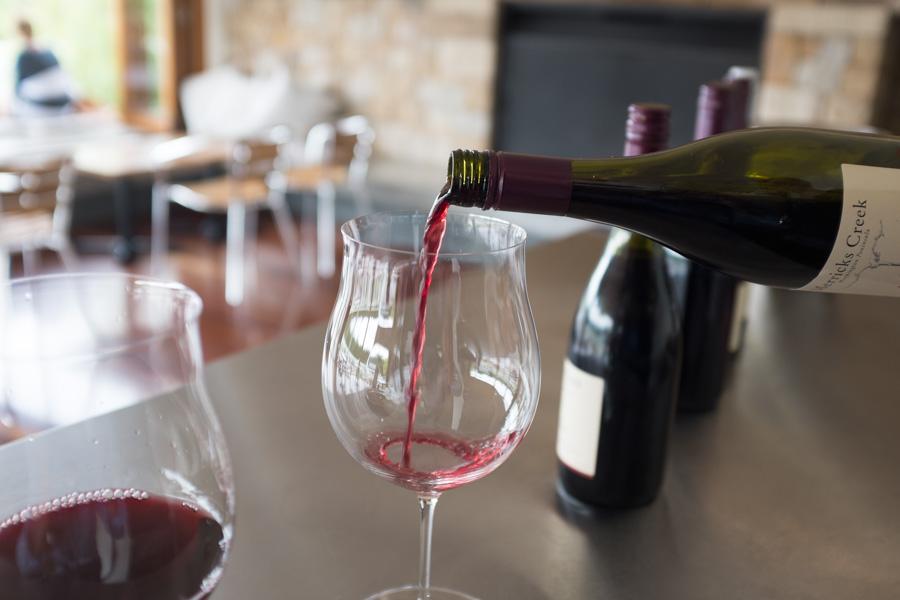
Harvest and winemaking at Merricks Creek Winery is a bespoke process with "everything done by hand", with a dash of romance. Peter and Sam Parker and the team are recreating hundreds of years of winemaking methods in emulating methods of Burgundy France. Check out our Best Mornington Peninsula Wineries.
When you visit Merricks Creek's stylish new Cellar Door for wine tasting, what are you looking for in tasting Pinot Noir? The World Loves Melbourne believes you can detect the nuances of the winemaking process in the standout Pinot Noir. Structure? Fruit driven? Elegant? Tannins?
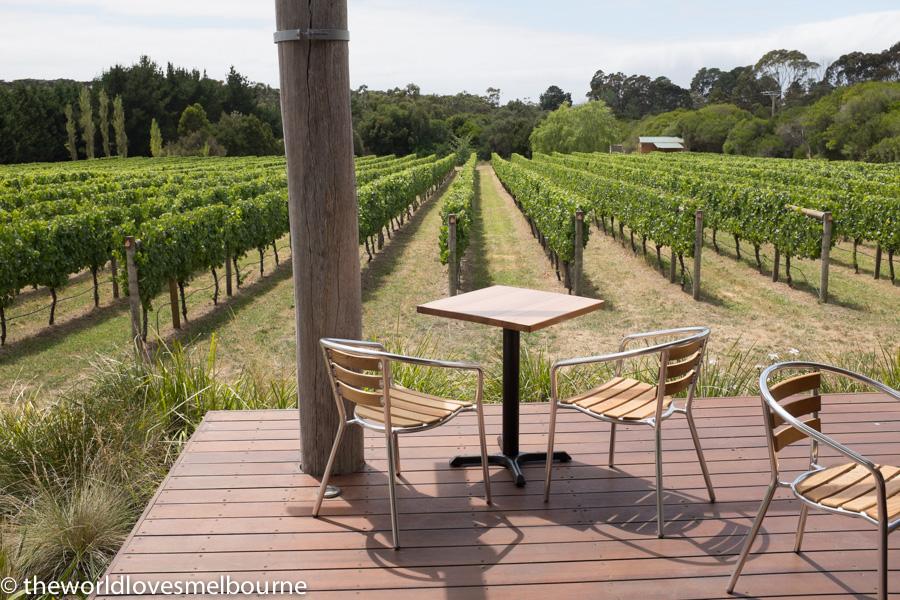
This year 2016 has been an excellent vintage; and it's a small team that makes the wine with Peter and Sam Parker the driving force with the help of Cellar Door hands and the help of Don the gardener.
The tension begins a few weeks before, with the random testing of rows of vines, every 20 steps or so, to take sugar levels of the grapes. Says Peter, We were looking for around 13.3 sugar level. Anything above 13.5 can bring an element of "jamminess" and make the wines not so elegant. So this is an exacting process. You don't want the grapes to be too ripe!"
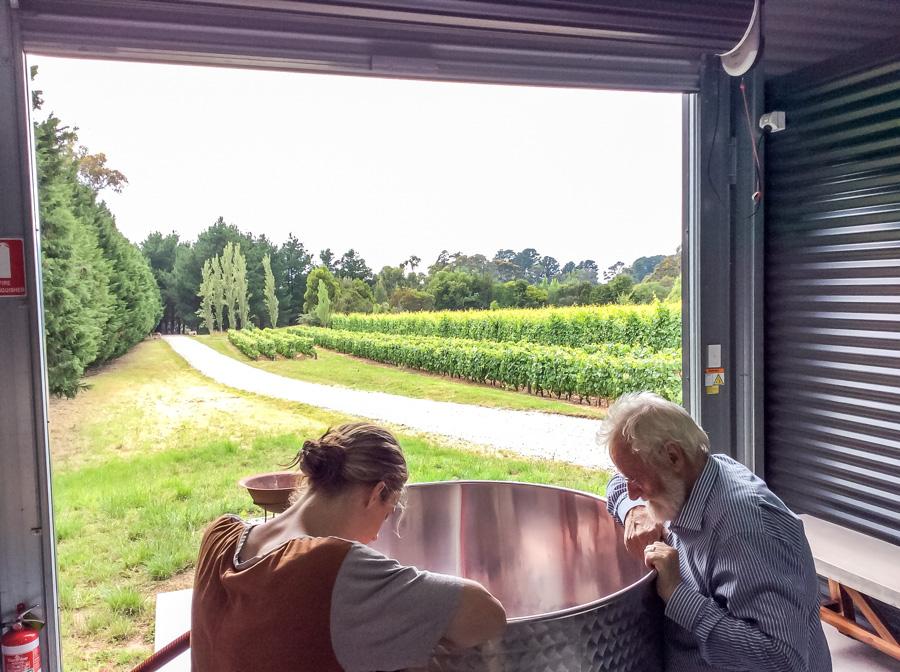
As it's an exacting process of when to pick the grapes, there are excellent pickers on standby to start picking on the exact day when conditions are optimum. Says Peter, "You can't simply book pickers in for a predicted date; you need to strike while the iron is hot." Peter also doesn't want any rain just before picking; as the grape harvest can become more diluted. When this happened in 2004 and 2008 Peter was able to turn to a Saingnée process; pumping out 20% of juice for Rosé then getting a greater intensity out of the skins that remained for the Pinot Noir.
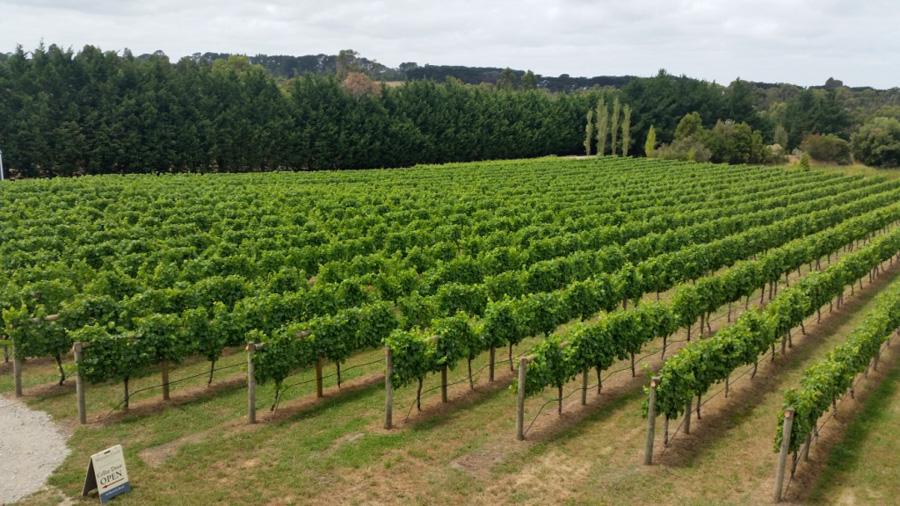
Pickers were able to start early in the morning while the grapes are as cold as possible. It can take a day to do all the picking and the aim was to get all the grapes into the shade as soon as possible.
This is where Peter and Sam Parker and Merricks Creek comes into it's own; emulating Burgundy. Says Peter Parker, "As it's around 25 - 30 degrees Celcius on the Mornington Peninsula it's a challenge to replicate Burgundy conditions, where the temperature is around 12 degrees Celcius. In Burgundy the grapes warm up to start fermenting at 15 degrees Celcius. On the Mornington the grapes are say around 22 degrees Celcius so fermenting can start straight away."
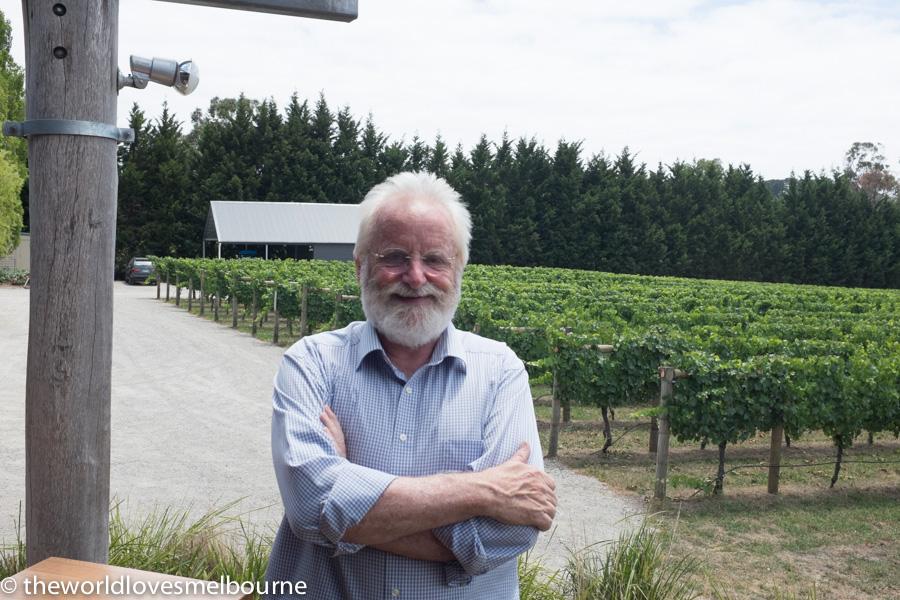
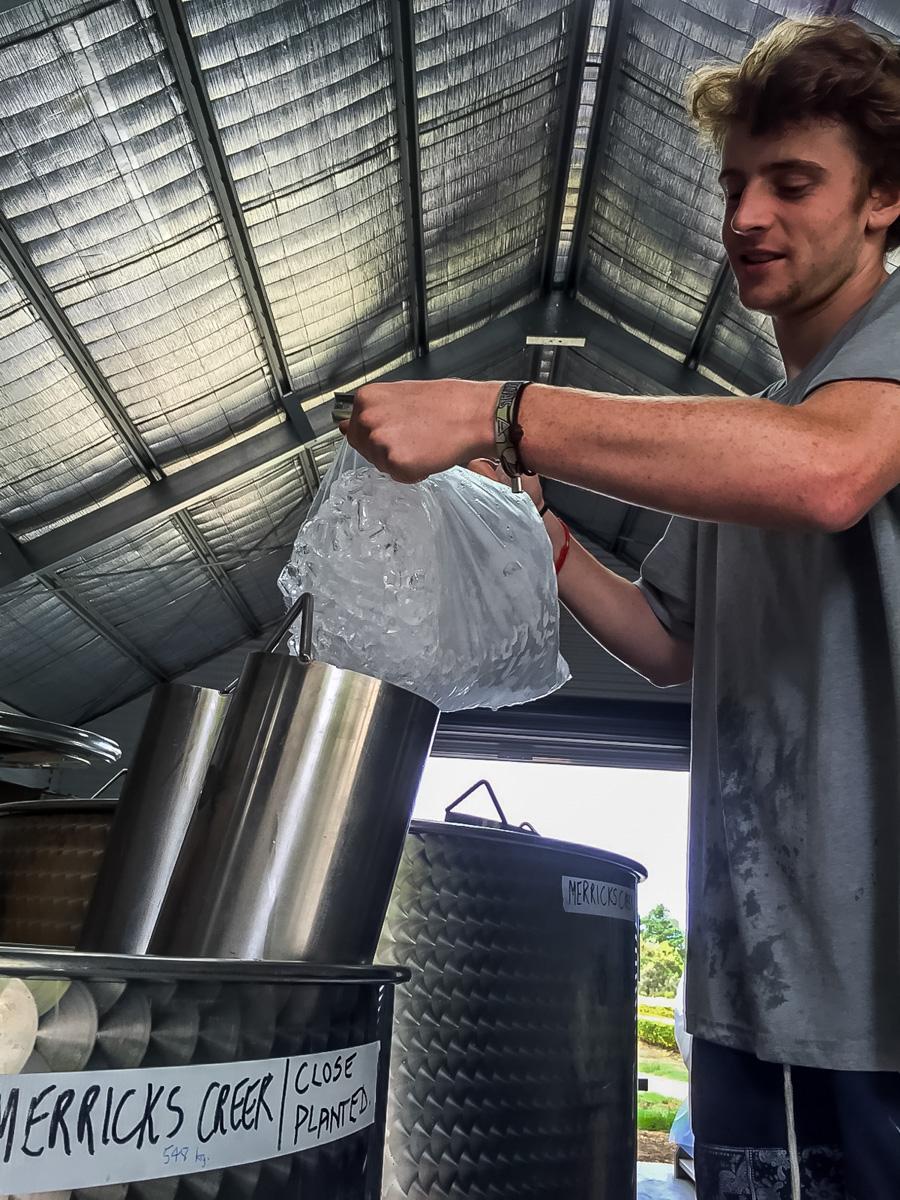
To keep grapes cool and have control over the fermenting process Peter and Sam Parker add ice. Peter fills steel tubes with ice to add to the tanks in the ferment containing the skins and pips floating in grape juice. This takes the temperature of the grapes down to 12 degrees Celcius to replicate Burgundy. It also allows the fermentation process to occur in line with Burgundy - say 15 degrees Celcius over a week.
Peter Parker then engages in plunging a stainless steel plate on a pole which he likens to "dipping a tea bag to make a great cup of tea". Says Peter Parker, "Plunging and crushing the grapes isn't about people jumping in the tank in bare feet; it's about plunging the steel plate to get the right balance of tannins in the wine. Too much plunging is like over dipping a tea bag in tea; you get too many tannins." Peter plunges twice a day morning and evening; to produce an elegant wine with nuances and not heavy tannins. He also keeps the winery super clean so there's no vinegar flies around, which can destroy the flavour of the wine if they get into the "must" (young wine).
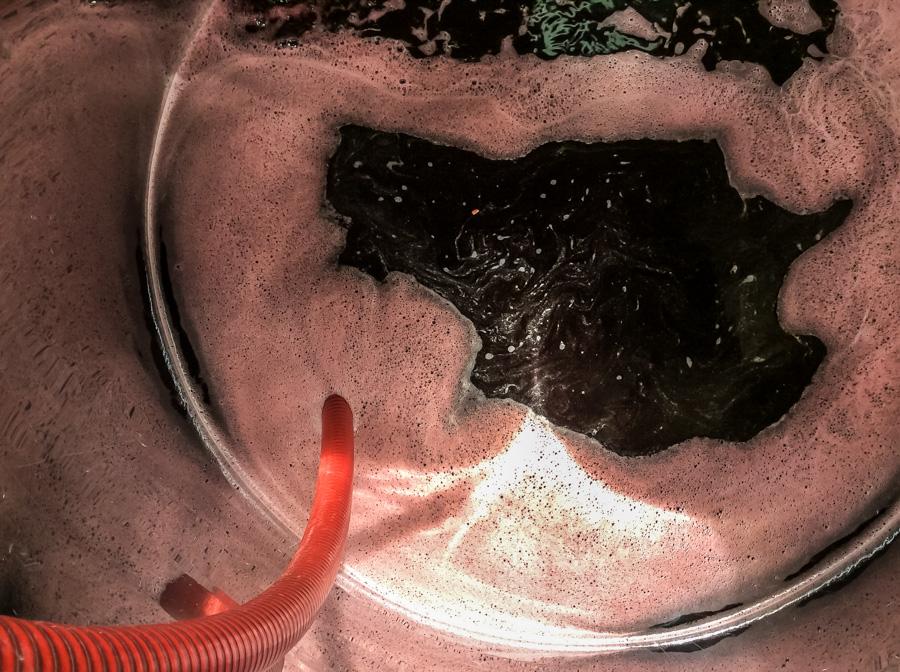
Winemaking at Merricks creek is bespoke with attention in the detail. Peter Parker plunges the skins and pips floating in grape juice every day, and takes the temperature every day in order to track the progress of the ferment where the sugar turns into alcohol. A reading of 13.3 sugar equates to 13.3 alcohol.
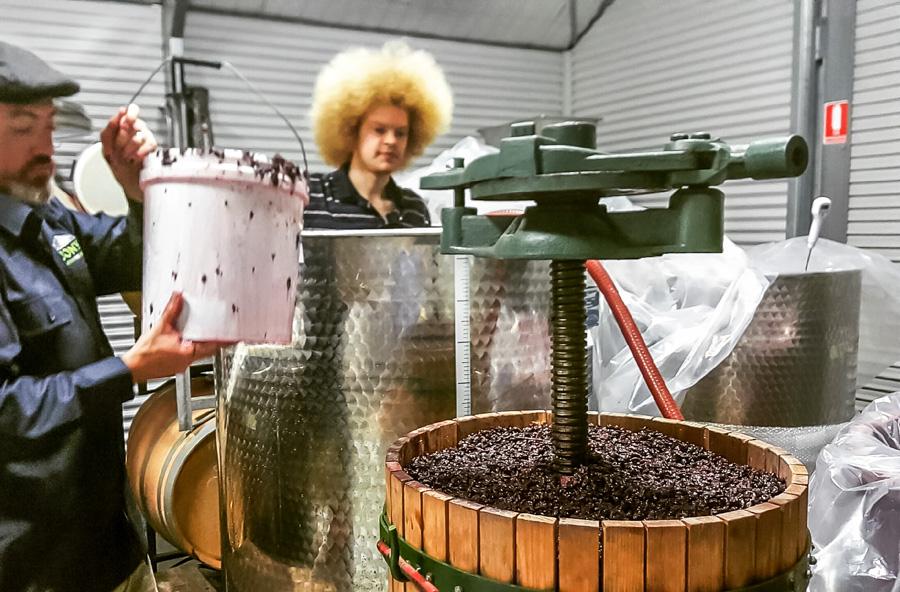
At the end of the ferment Peter doesn't want any sugar left, i.e. less than 0.1% sugar. He sends the sample to the laboratory to confirm the reading before proceeding with the next stage. (Of course there are different ferments for different parts of the vineyard such as the Close Planted).
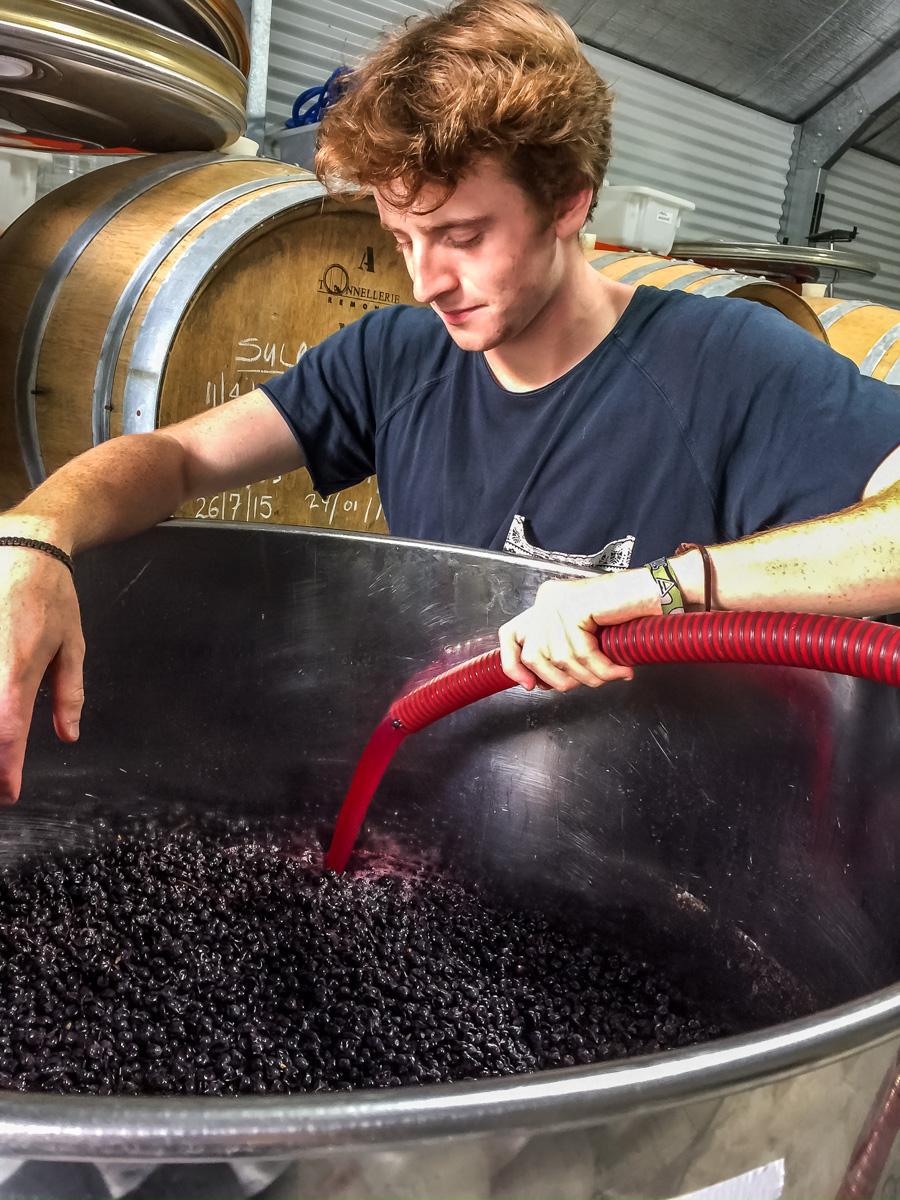
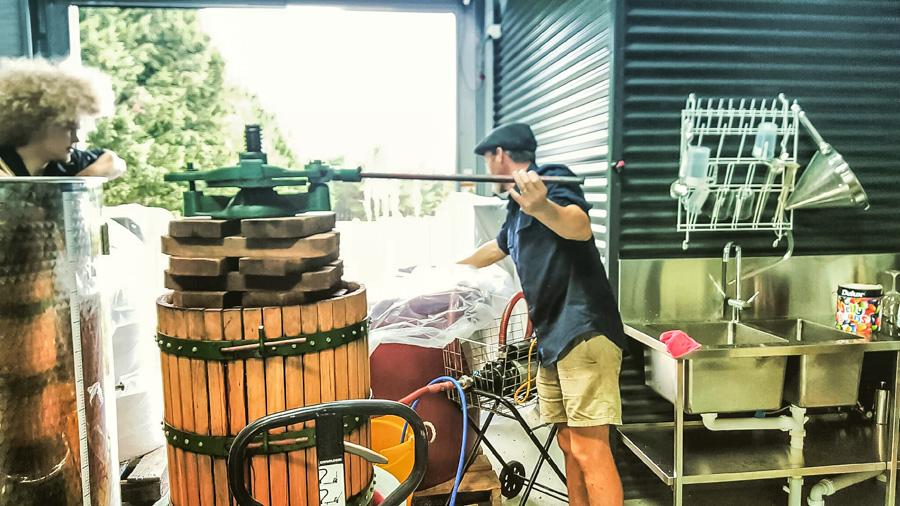
During the next stage Peter Parker wraps the tanks in bubble wrap (see picture below) for 2-3 days to hold the heat in to finish fermentation. This helps achieve elegance, and soft subtle but robust tannins in the Pinot Noir. Says Peter, "The wine needs the right amount of intensity, flavour and colour from dipping in the skins.
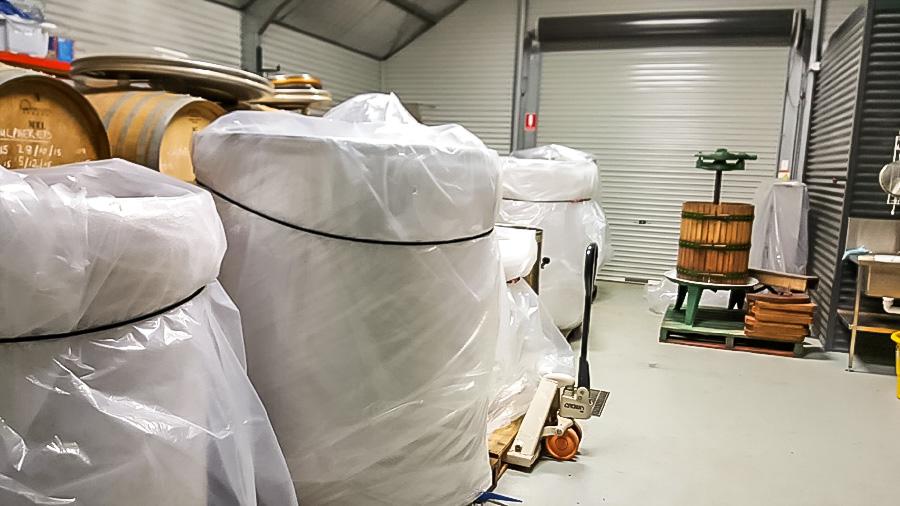
Peter says "You can't squeeze too hard so using our muscles is perfect rather than some machine; so we don't get bitterness sin the wine. It's the same system that's been used for thousands of years."
At the end of ferment there's a "cap" formed in the tanks from the skins. To test the ferment, Peter lights a match above the cap; if the match goes out there's still CO2 present. If the match doesn't go out, the fermentation is deemed to be finished!
Then the end of the ferment is confirmed by laboratory testing to ensure that all the sugar has fermented into alcohol and no residual sugar is left which can allow for further ferments on the barrel.
Finally it's time to press the skins and put the wine into the French oak barrel. Peter avoids oxidising the wine by dribbling CO2 over the top until it's ready. The press occurs straight away once the ferment is ready!
As with the bespoke process, Peter and Sam Parker press in a Basket Press. All the free juice is pumped into a separate tanks. Sam Parker climbs into the tank to transfer the pips and grape skins into the press to press down and get the last bits of juice
as well as some of the intensity of flavours that reside in the skins that are being pressed.
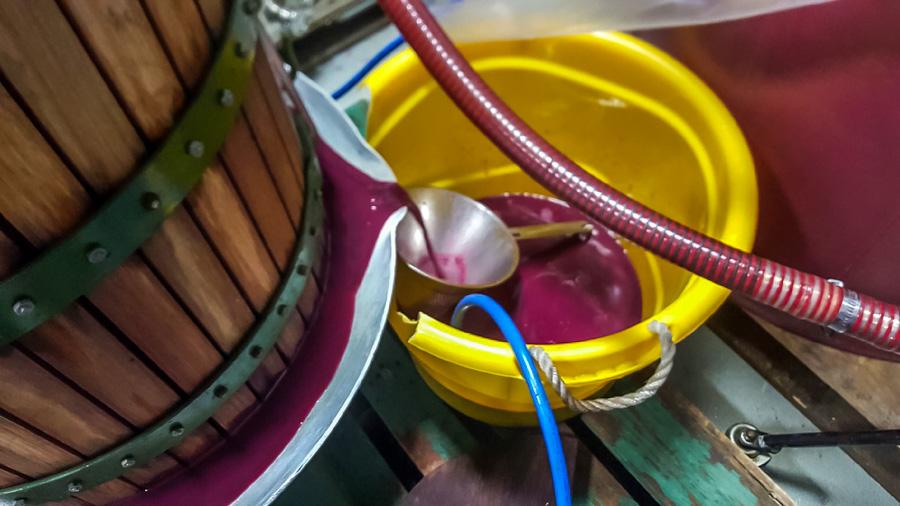
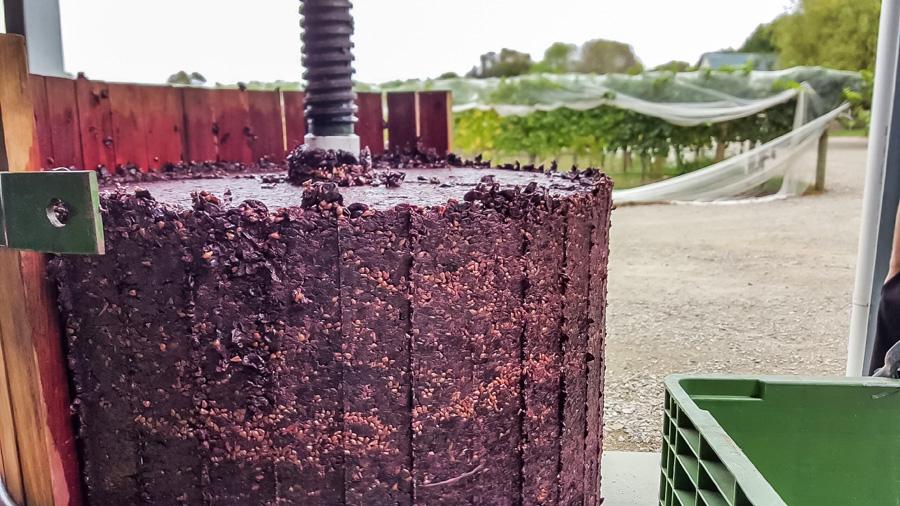
After being pressed, the dry skins forming a type of "cake" are then cut up and used as mulch around the winery.
The wine is transferred to the French oak barrels for 18 months then bottling (also carried out by Peter and Sam Parker) takes place. The wine is ready for consumption 3 months after bottling. Pinot is a delicate creature and gets upset with the moving around and pumping involved in bottling and goes into “bottle shock” for a while afterwards before returning to its original quality.
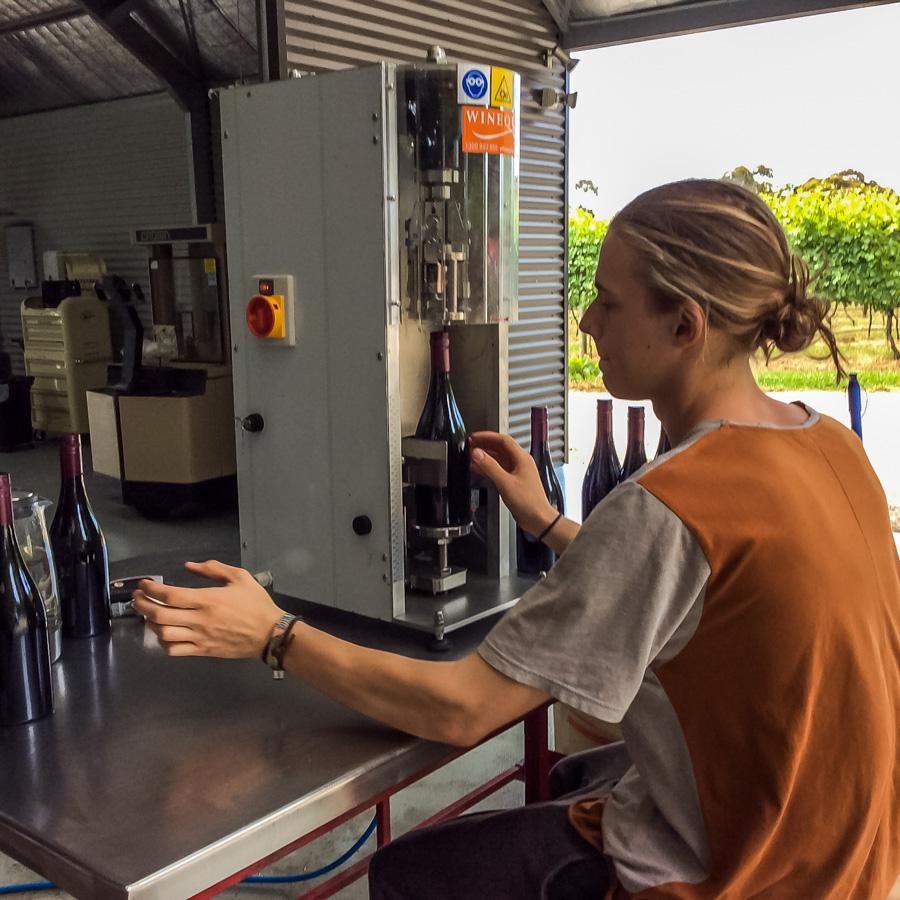
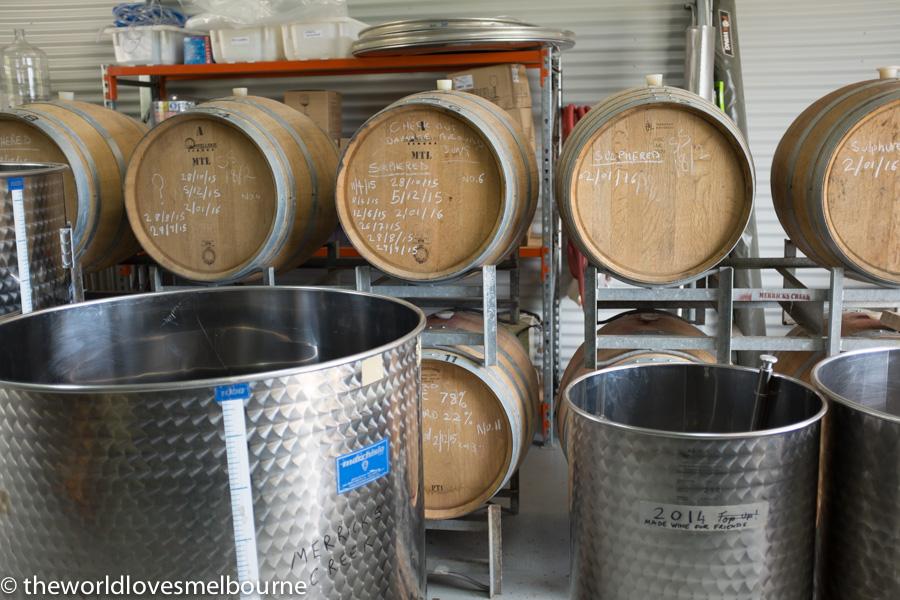
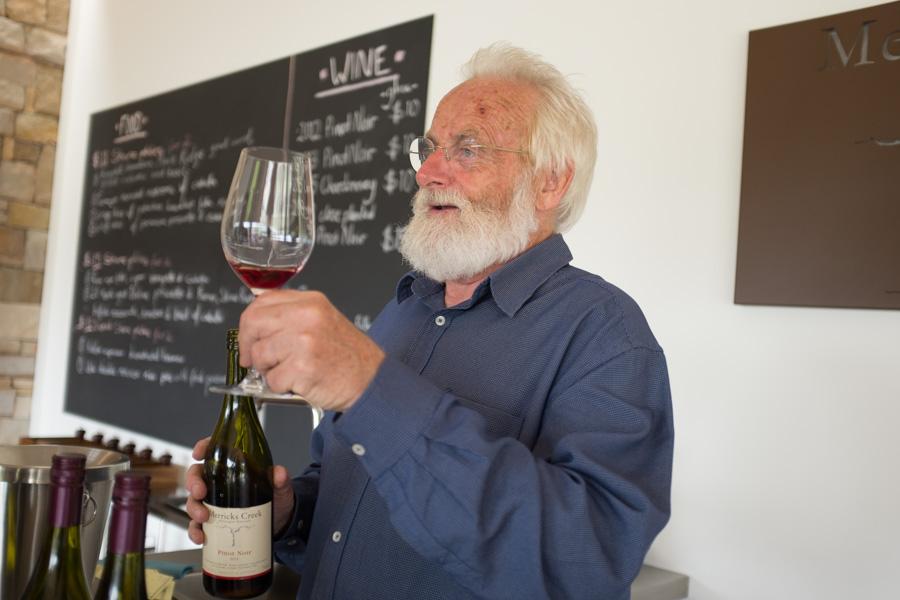
The World Loves Melbourne loves the bespoke nature of the winemaking process compared to say large commercial wineries. We celebrate that Merricks Creek is about "everything by hand" and "channeling Burgundy" on the Mornington Peninsula.
